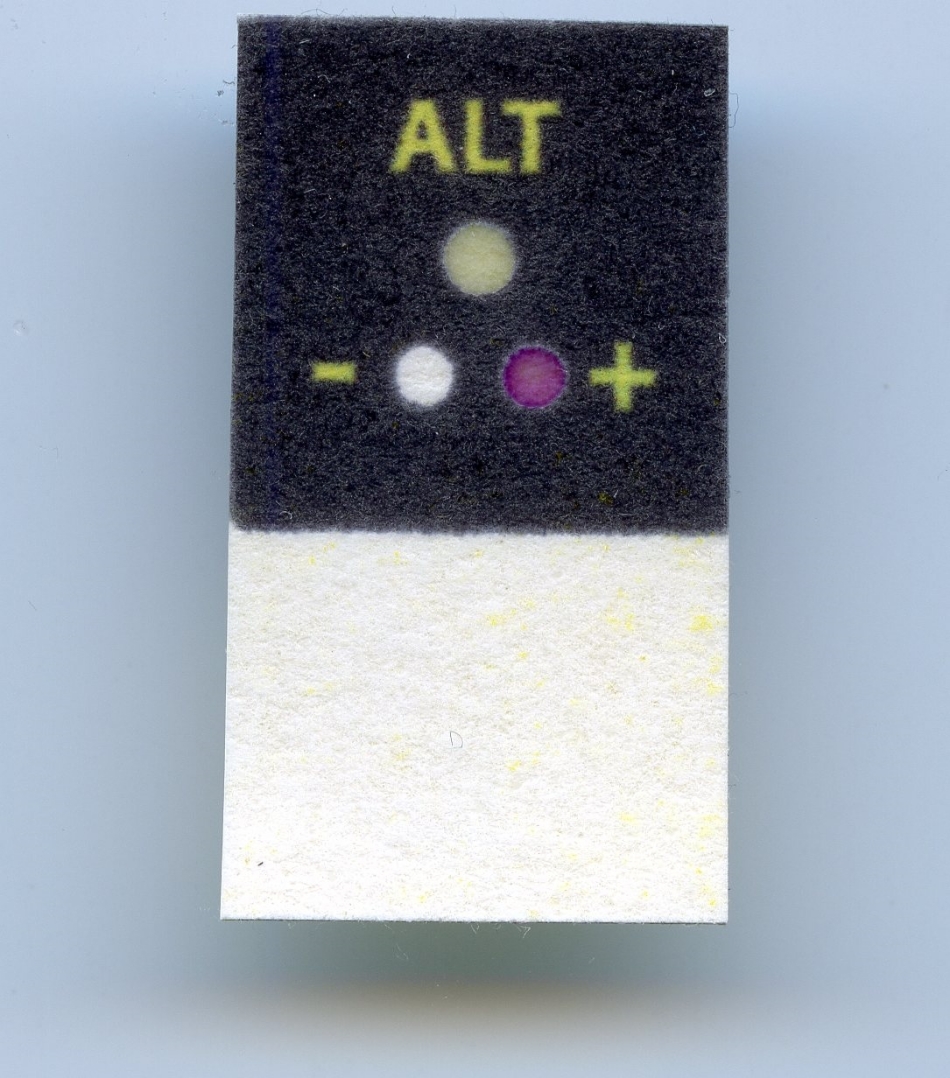Patterned paper is a game-changing technology for delivering low-cost diagnostic devices to support human and economic development in the developing world. This technology, which underlies our devices, was developed by Professor George Whitesides and his team at Harvard University. DFA holds an exclusive worldwide license from Harvard for medical and other applications of the technology.
How it Works
Paper is inexpensive, universally available, and compatible with many biological and chemical assays. To fabricate a diagnostic device, DFA patterns channels and assay zones (or wells) into a piece of paper roughly the size of a postage stamp. These wells also contain biological and chemical assay reagents to catalyze the desired diagnostic test. When a biological sample—like blood, urine, saliva, or sweat--is applied to the device, the paper wicks the sample through the channels to the assay zones to process the biochemical reaction. Upon contact, the assay zone changes color; these results are then easily read by comparing the color change with a reference scale printed on the device.
As we develop more advanced diagnostics, we can embed our patterned paper-based devices with electrical circuitry to enable resistive heating, electrochemical assays, or initial processing of assay results. Additionally, we can stack multiple sheets of patterned paper to generate three-dimensional devices capable of automatically performing a variety of complex fluid operations such as splitting, filtration, mixing, and separations.
Advantages
- Chemically versatile - The patterned paper technology can be applied to create immunoassasys, electrochemical assays, clinical chemistry assays, and molecular diagnostics.
- Easy-to-use and easy-to-read – Paper diagnostics require minimal training to use and read. They are both user-friendly and minimally invasive. A sample from a finger prick is sufficient to yield results: no need for syringes, clean water, nor sample preparation. Results are quickly displayed, enabling immediate clinical decisions.
- Inexpensive - Paper is significantly less expensive than other typical materials. Additionally, its ability to "wick" samples and reagents eliminates the need for external pumps or other laboratory equipment. Patterned paper-based devices can be manufactured to scale using existing high-volume, low-capital techniques and equipment.
- Portable - DFA’s patterned paper-based devices are small and lightweight, making them easy to bring directly to those who are unable to travel to hospitals or clinics. The devices, with no mechanical parts, are robust enough for use under severe environmental conditions. No auxiliary equipment, electricity, or laboratory facility is needed to use the device or process a sample.
- Disposable - DFA’s patterned paper-based devices are single-use, and they can be easily and safely disposed of through incineration, assuring that they do not contribute to the growing problem of global medical waste.


